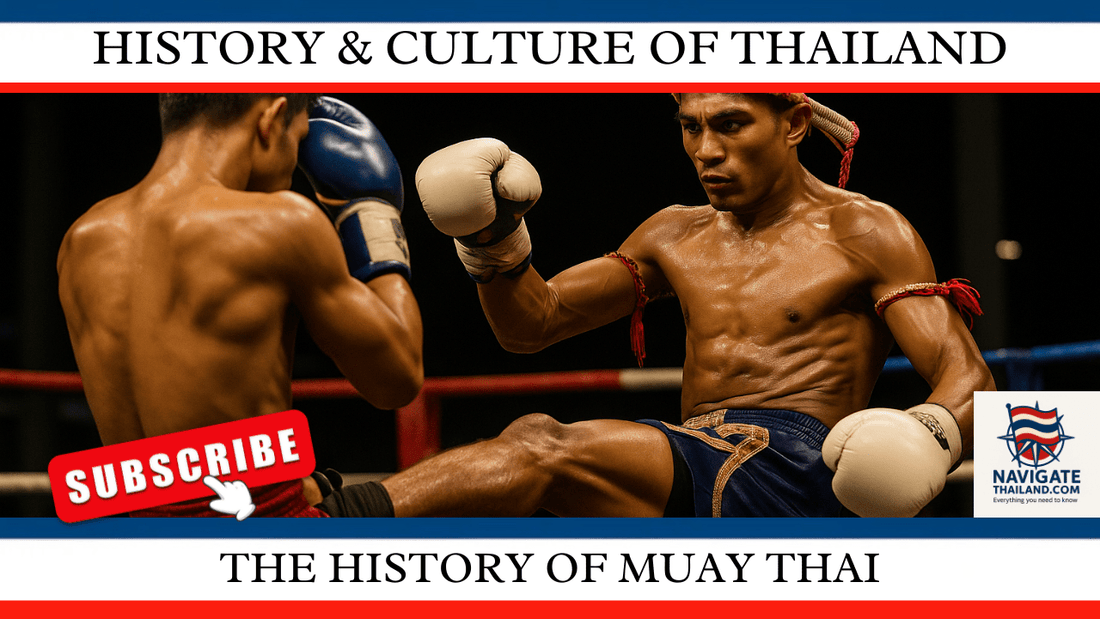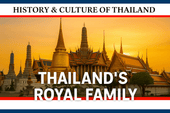
The History of Muay Thai: Thailand's National Sport
Share
Muay Thai, the national sport of Thailand, is a captivating and ancient martial art that has captured the hearts and minds of people around the world. As you step into the world of Navigate Thailand, let's delve into the rich history and cultural significance of this unique fighting style.
Muay Thai's origins can be traced back to the 16th century, when it was developed as a form of close-quarters combat for Thai soldiers. During times of war, these skilled fighters would use their fists, elbows, knees, and shins to overwhelm their opponents, earning Muay Thai the moniker "the art of eight limbs."
Over the centuries, Muay Thai evolved from a practical battlefield technique to a revered sport and cultural tradition. The sport gained widespread popularity in the early 20th century, with the establishment of formal competitions and the emergence of legendary Muay Thai champions.
One of the most iconic figures in Muay Thai history is Nai Khanom Tom, a Thai warrior who is said to have single-handedly defeated 10 Burmese prisoners of war in a boxing match in the 18th century. This remarkable feat cemented Muay Thai's reputation as a formidable and effective martial art, and Nai Khanom Tom is now revered as a national hero in Thailand.
As Muay Thai gained global recognition, it also became deeply intertwined with Thai culture and identity. The sport is often performed during important festivals and ceremonies, with fighters adorning traditional attire and engaging in rituals to honor their ancestors and the art itself.
One of the most captivating aspects of Muay Thai is the unique training regimen that practitioners undergo. Aspiring Muay Thai fighters often begin their training at a young age, honing their skills through a combination of physical conditioning, sparring, and mental discipline. This rigorous training not only develops their physical prowess but also instills a deep sense of respect, humility, and perseverance – values that are deeply rooted in Thai culture.
Today, Muay Thai continues to captivate audiences around the world, with professional competitions and tournaments drawing in fans from all corners of the globe. Whether you're a seasoned martial artist or simply fascinated by the rich cultural heritage of Thailand, the history of Muay Thai is a story that deserves to be explored and celebrated.
So, as you embark on your journey with Navigate Thailand, be sure to immerse yourself in the captivating world of Muay Thai – a true testament to the resilience, skill, and cultural pride of the Thai people.
The Evolution of Muay Thai
Muay Thai's journey from a battlefield technique to a global sport has been a fascinating one. Over the centuries, the art has undergone numerous transformations, adapting to the changing needs and preferences of both practitioners and spectators.
In the early days, Muay Thai was primarily used as a means of self-defense and military combat. Fighters would use their entire bodies as weapons, relying on their fists, elbows, knees, and shins to overwhelm their opponents. This raw and unforgiving style of fighting was a reflection of the harsh realities of war and the need for effective close-quarters combat.
As Muay Thai gained popularity and transitioned into a sport, the rules and regulations governing the sport began to evolve. Protective gear, such as gloves and headgear, were introduced to enhance safety, and the number of rounds and time limits were standardized to create a more structured and organized competitive environment.
One of the most significant developments in Muay Thai's history was the establishment of the Lumpinee Boxing Stadium in Bangkok in the 1950s. This iconic venue became the epicenter of Muay Thai, hosting some of the most prestigious and high-stakes matches in the sport's history. The Lumpinee Boxing Stadium not only elevated the sport's profile but also helped to codify the rules and techniques that are now recognized as the hallmarks of modern Muay Thai.
As Muay Thai's popularity continued to grow, both within Thailand and internationally, the sport underwent further refinements and adaptations. Fighters began to incorporate elements from other martial arts, such as kickboxing and boxing, to enhance their repertoire and competitive edge. This cross-pollination of techniques has helped to keep Muay Thai relevant and engaging for both practitioners and spectators.
Today, Muay Thai is a global phenomenon, with practitioners and fans spanning the world. From the bustling streets of Bangkok to the elite training camps of Europe and North America, the art of the eight limbs continues to captivate and inspire people of all backgrounds. Whether you're a seasoned fighter or simply a curious observer, the rich history and cultural significance of Muay Thai are sure to leave a lasting impression.
The Cultural Significance of Muay Thai
Muay Thai is not just a sport; it is a deeply ingrained part of Thai culture and identity. The art of the eight limbs is woven into the fabric of Thai society, serving as a symbol of national pride and a reflection of the country's rich heritage.
One of the most striking aspects of Muay Thai's cultural significance is its connection to Thai spirituality and religious beliefs. Before a match, Muay Thai fighters often engage in rituals and ceremonies to honor their ancestors, the sport, and the gods. These rituals, which include the wearing of sacred armbands and the performance of traditional dances, are believed to imbue the fighters with strength, courage, and protection.
The cultural significance of Muay Thai is also evident in the way the sport is celebrated and revered within Thai communities. Muay Thai matches are often held during important festivals and celebrations, with spectators gathering to witness the displays of skill, strength, and athleticism. These events are not just about the sport itself; they are opportunities for the Thai people to come together, celebrate their heritage, and pass on the traditions of Muay Thai to the next generation.
Beyond its spiritual and ceremonial aspects, Muay Thai is also deeply intertwined with Thai identity and national pride. The sport is often seen as a symbol of Thai resilience, perseverance, and self-reliance – qualities that have been forged through the country's tumultuous history. Muay Thai champions are revered as national heroes, with their victories celebrated as triumphs of the Thai people.
As Muay Thai has gained global recognition, it has also become a powerful tool for cultural exchange and diplomacy. Thai fighters have traveled the world, sharing their art and showcasing the unique cultural traditions that are integral to the sport. In turn, the influx of international practitioners and fans has helped to spread the influence of Muay Thai, fostering a greater appreciation for Thai culture and heritage.
In the world of Navigate Thailand, the cultural significance of Muay Thai is a testament to the richness and diversity of the country's traditions. Whether you're a seasoned practitioner or simply a curious observer, exploring the cultural roots of this captivating martial art can provide a deeper understanding and appreciation of the Thai people and their way of life.
Read more of our Thailand blog series:
Thai Food Guide:Traditional Recipes and Street Eats
Everything Travellers Need to know
Thailand travel ebooks and language guides
Thailand Travel Apparel & Souvenir Gifts
Subscribe to our YouTube channel Navigate Thailand to see our most popular Thailand travel blogs turned into videos:
Navigate Thailand YouTube channel



















































































































































